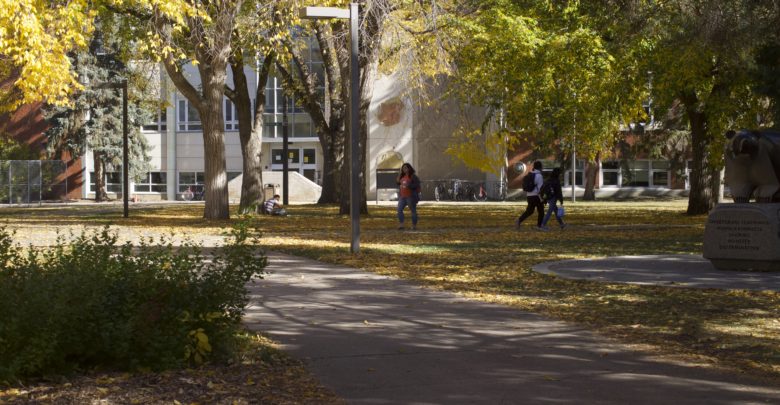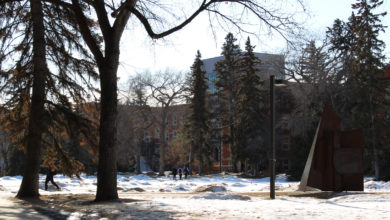Ask a Prof: What is the Red Zone and does it exist at the U of A?
Whether or not the Red Zone actually exists in Canada is not well-understood, but prevention education needs to be increased year-round, Lise Gotell says.
 Emily Williams
Emily WilliamsConcerns with rates of sexual and gender-based violence (SGBV) amongst post-secondary populations in Alberta have grown over recent years, as have efforts to address it. But is there a time when rates of SGBV on campuses are higher than usual? Previous research would say so.
According to research into the Red Zone, the first six to eight weeks of the fall semester are a period during which around 50 per cent of SGBV on North American campuses will occur. The reason for this is often attributed to high rates of partying and the arrival of many new students to campus.
However, according to Lise Gotell, a professor in the department of women’s and gender studies at the University of Alberta, the concept of the Red Zone has come under criticism. For instance, much of the research into the Red Zone is quantitative, focusing on finding out how many assaults take place within those first six to eight weeks.
“We need more qualitative research in order to really understand this. Whether or not, first of all, there is a Red Zone and if so, how it’s experienced.”
Concept of the Red Zone doesn’t investigate “men’s responsibility for perpetrating sexual violence,” Gotell says
Additionally, the issue of SGBV on post-secondary campuses is “pervasive,” Gotell explained. The issue doesn’t halt at the eight week mark. But, if universities focus on the Red Zone “there’s a danger that they will load prevention efforts into the beginning of the first term.”
Thirdly, the Red Zone is often blamed on party culture and alcohol consumption, which places the focus on women and their behaviour. In doing so, “we don’t interrogate the gender dynamics of party culture or men’s responsibility for perpetrating sexual violence.”
“Instead we focus on ‘are you drinking too much? Are you protecting your drink always when you’re at a party?’”
Much of the research into the Red Zone and SGBV on campuses has been conducted in the United States (U.S.), Gotell said. According to Gotell, this is the result of Title IX, which was passed in 1972 and prohibits discrimination on the basis of sex in any school that receives federal funding.
Comparatively, most Canadian research into SGBV on campuses has only been published in the past 10 years. This provides a challenge for understanding whether or not the concept of the Red Zone can even be applied to Canadian campuses, Gotell explained.
For one, Canadian campuses are more often commuter campuses. Students reside in private residences. In the U.S., it’s the opposite.
“What that means is most students live on campus. And that means that they socialize on campus. So there’s this really intense focus on that campus culture when it comes to sexual violence.”
More prevention education for SGBV needed at the U of A, Gotell says
Whether or not the concept of the Red Zone can be applied to Canadian campuses, Gotell emphasized the need for sexual violence prevention at the U of A. This could help send the message to news students that “the university cares about [SGBV] and is committed to addressing it.”
“If that happens within the first … year then that sends a message to the students that this campus culture is not one that tolerates sexual violence,” Gotell said. “I think that would be important, but we don’t have that right now. We have no prevention education essentially.”
The U of A Sexual Assault Centre (UASAC) is not only responsible for providing services and supports to survivors of SGBV. UASAC is also meant to provide education and awareness initiatives. However, Gotell has observed that UASAC “has had some problems reviving their education program.”
“We’ve had a couple of years without having a sexual assault centre that delivers prevention education. So there’s a real gap here that needs to be addressed.”
According to a response from the U of A, prevention education is a high priority for UASAC and that while that work is ongoing “it is not accurate to suggest that no prevention education is taking place.”
“Since November 2024, the UASAC has reached more than 6,000 individuals with sexual violence prevention education and outreach, including 31 presentations and workshops and attendance at 17 resource fair events,” the response reads.
Additionally the response noted that UASAC is continuously developing education workshops and training, some of which took place during Consent Week, which ran from September 22—26. It also noted that the university provides an awareness training initiative “with the goal of building a culture of consent to prevent SGBV.”
Gotell emphasizes the importance of bystander education
In terms of preventing SGBV, Gotell emphasized the importance of bystander education. According to Gotell, “bystander education is a lot more effective as a form of prevention, because that teaches people not to tolerate sexual violence in their communities and gives them strategies to intervene.”
Bystander education focuses on equipping people with the tools to intervene if they witness a concerning situation. On campus, that can mean helping another student who is being harassed in the library or on transit, Gotell explained.
“And just doing something like that is a really effective way culturally of reducing the problem of sexual violence.”




